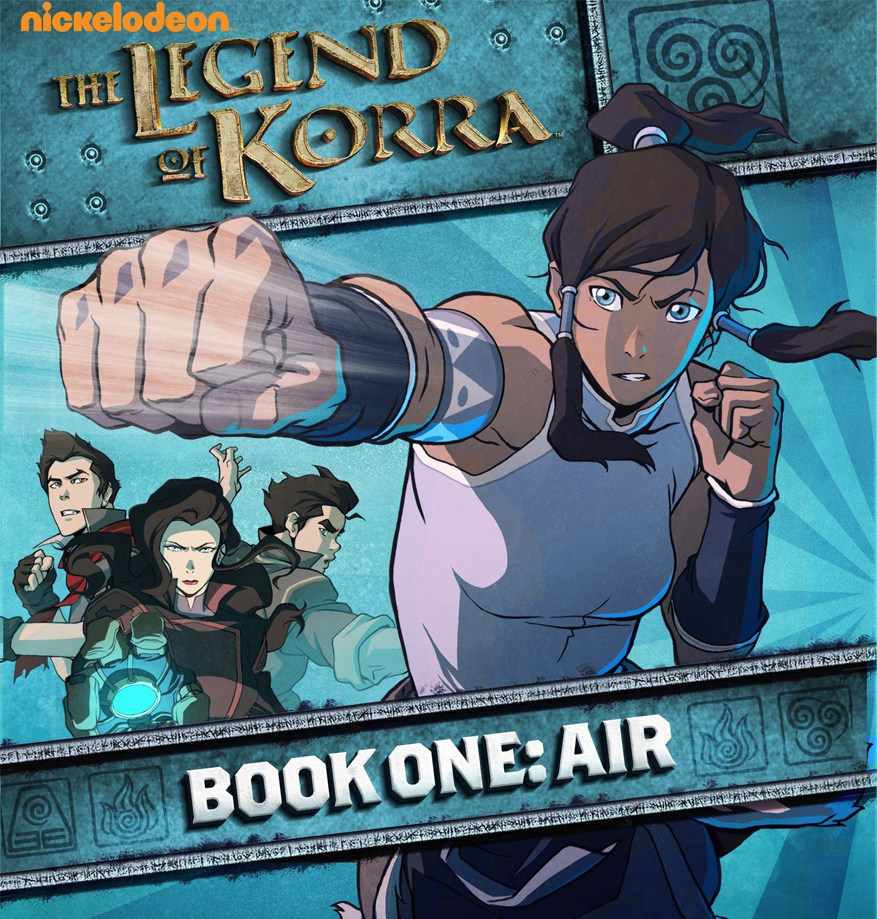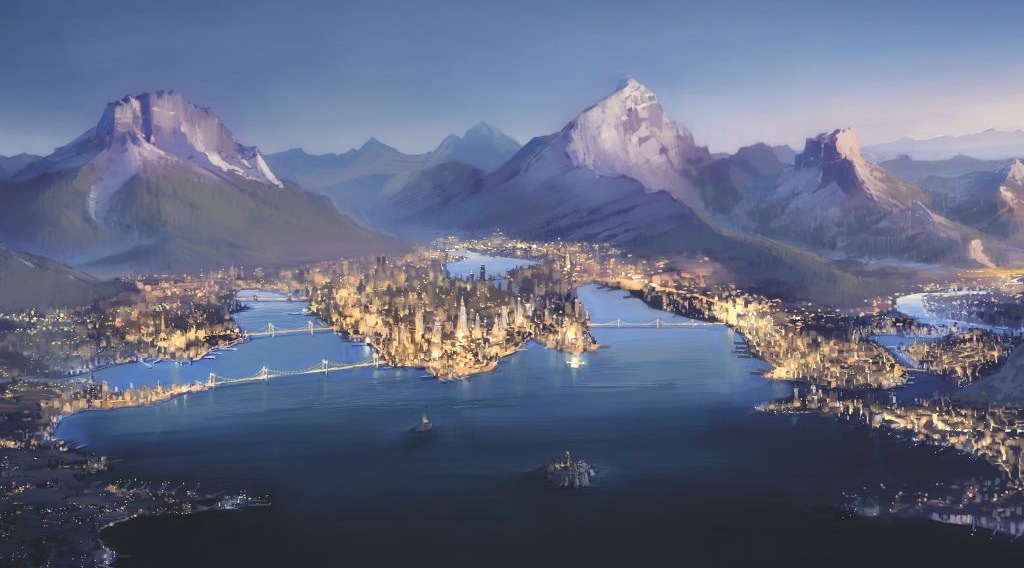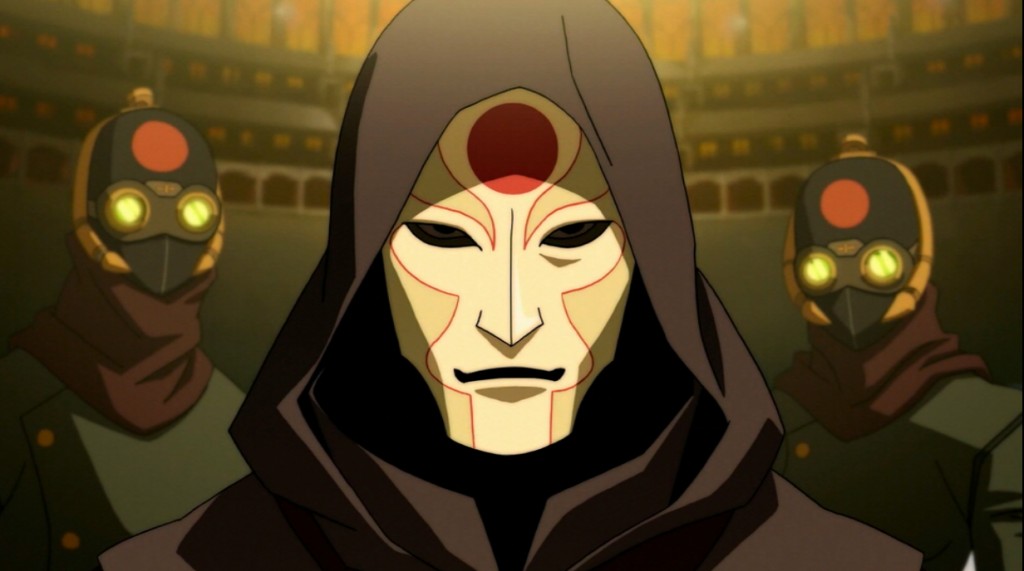The Legend of Korra

Book 1: Air
It was difficult starting this part of the Avatar: The Last Airbender series because it only dredged up how much I loved the original adventure. Admittedly I was ecstatic when I'd heard that the main character--the new Avatar--would be a badass female. I was, of course, worried that she might not live up to Aang's standard of Avatar-awesomeness, but even girls have to begin somewhere, right?
And in this case, Korra's beginning is in "Book 1: Air."
The Avatar world has changed much, especially within the colonies that had been seized by the Fire Nation under Sozin, Azulon, and Ozai's terms. As a solution and a proffer for peace for the mixed peoples living within the colonies, both Avatar Aang and Fire Lord Zuko founded Republic City: a large land-mass at the edge of the northern Earth Kingdom.

The Legend of Korra takes us seventy years after the end of the Hundred Year War in Avatar: The Last Airbender. At this point, Republic City is a flourishing place, and it is no wonder because it is a co-existence of benders and non-benders from all four realms. Think of the place as a 19th century New York; it is a melting pot of Fire Nation, Earth Kingdom, Northern and Southern Water Tribe, and Air Nomad citizens. That's certainly how I pictured New York if it had elemental benders and steampunk-related inventions!
"Book 1: Air" opens up with the finding of the new Avatar, a girl from the Southern Water Tribe. Upon confirming that Korra is indeed the new Avatar, she is put under White Lotus protection and is trained in the elements as befitting her Avatar status. By the time the audience has a chance to blink, Korra is seventeen and in control of three of the four elements: water, fire, and earth.
That isn't to say that she's on her way to being a fully realized Avatar. Where Aang had become an airbending master at twelve years old, Korra is unable to airbend. Ultimately, Korra's path in becoming a fully realized Avatar is the opposite of that of Aang's: she must learn to airbend, whereas Aang had to learn to master the other three elements. As a solution, Korra moves to Republic City in order to study under Tenzin, an airbending master and the previous Avatar's youngest son.

The whole ordeal sounds easier than it looks, however. On top of her lack of spirituality, Korra is an impatient teenager and is often distracted by much in the way of Republic City. If the problem hinged solely on her desire to participate in pro-bending bowls and her rather explosive love life, it would not be such a big deal. However, tensions between benders and non-benders have risen high in Republic City, and it has been said that Amon--the non-bending revolutionary--even has the gift of taking away somebody's bending abilities. Danger has come and with an unrealized Avatar, the stakes have risen higher for Korra, who must learn to tap into her Avatar State before things get worse.
The season itself had a lot to live up to, what with the ending of AtLA resulting in a clamor of fans wanting more stories of the Gaang (which, fortunately, spawned a series of graphic novels that continue the story of Aang and his friends). While it certainly differs from the more child-friendly AtLA, there is a great deal of the essence of the Avatar world that remains in LoK, which is further realized through the splendid animation of the series.
Book 1 took some getting used to. The season itself started slower than I expected, with at least half the episodes focusing on character stories and this pro-bending bowl arc that I could honestly have done without. Once Amon and his revolutionaries finally entered the picture and started wreaking havoc, things did pick up.

Korra took getting used to. Fiery-tempered Korra is the direct opposite of Aang, in both personality and bending mastery. You either hated her or loved her. There's no denying she can kick ass, but I did get tired quickly with her temperament and lack of respect. While I often compared her to the happy-go-lucky Aang, it would probably be better to liken her personality to Zuko, who was just as impatient and ill-tempered--and masterful in martial arts--at her age. While I didn't fully love Korra by the end of Book 1, I gave her a chance. Heck, it took Zuko two and a half seasons to pull himself together, so why not give Korra the same amount of time?
The fact that most of the characters in Aang's world at this point are either dead or a gazillion years old took getting used to. While I immediately loved Tenzin and his rambunctious airbending children, and adored the metalbending badassery of Lin Beifong (oh yes, the Beifong line continues!), I did miss my personal favorites in AtLA from time to time. As a firebender, Mako paled in comparison to Zuko. As an earthbender, Bolin definitely paled in comparison to Toph--the original Beifong. As a non-bender, Asami paled in comparison to--no, screw that. Sorry Sokka, but Asami Sato was just awesome. The new Team Avatar took a while for me to appreciate, but eventually I did warm up to them as a whole.

So did "Book 1: Air" live up to expectations? I'm split on this.
On the one hand, the overarching problem--Amon taking away bending abilities--was darkly more intense than the original series. Since Aang and the ancient lionturtles, nobody had the power to take away bending abilities, and this is hella-scary on a certain level. Book 1 had serious themes that you wouldn't normally find in a Nickelodeon-sponsored show. The show's beautiful animation and badass characters are certainly reasons enough to tune in and watch every episode. By the last few episodes, fans went on a roller-coaster ride of anxiety and relief at finding out what happened to characters they've started to love.
On the other hand, it came off frustratingly slow at the beginning and disappointedly fast by the end. For a problem that started and ended within the same season, you'd think there'd be more focus on Amon and the fight to vanquish him. This doesn't even happen until the second half of the season, and by that point, there weren't enough episodes to cover the struggle! AtLA had twenty-something episodes each season to further develop its characters and storylines. LoK had a total twelve in Book 1 to wrap everything together, and I felt the pacing in the story suffered because of it.

Overall, however, "Book 1: Air" left me with the desire for more. Republic City's steampunk aesthetic had already hooked me from the beginning, and the characters soon grew on me, enough that I want to know what happens next.






